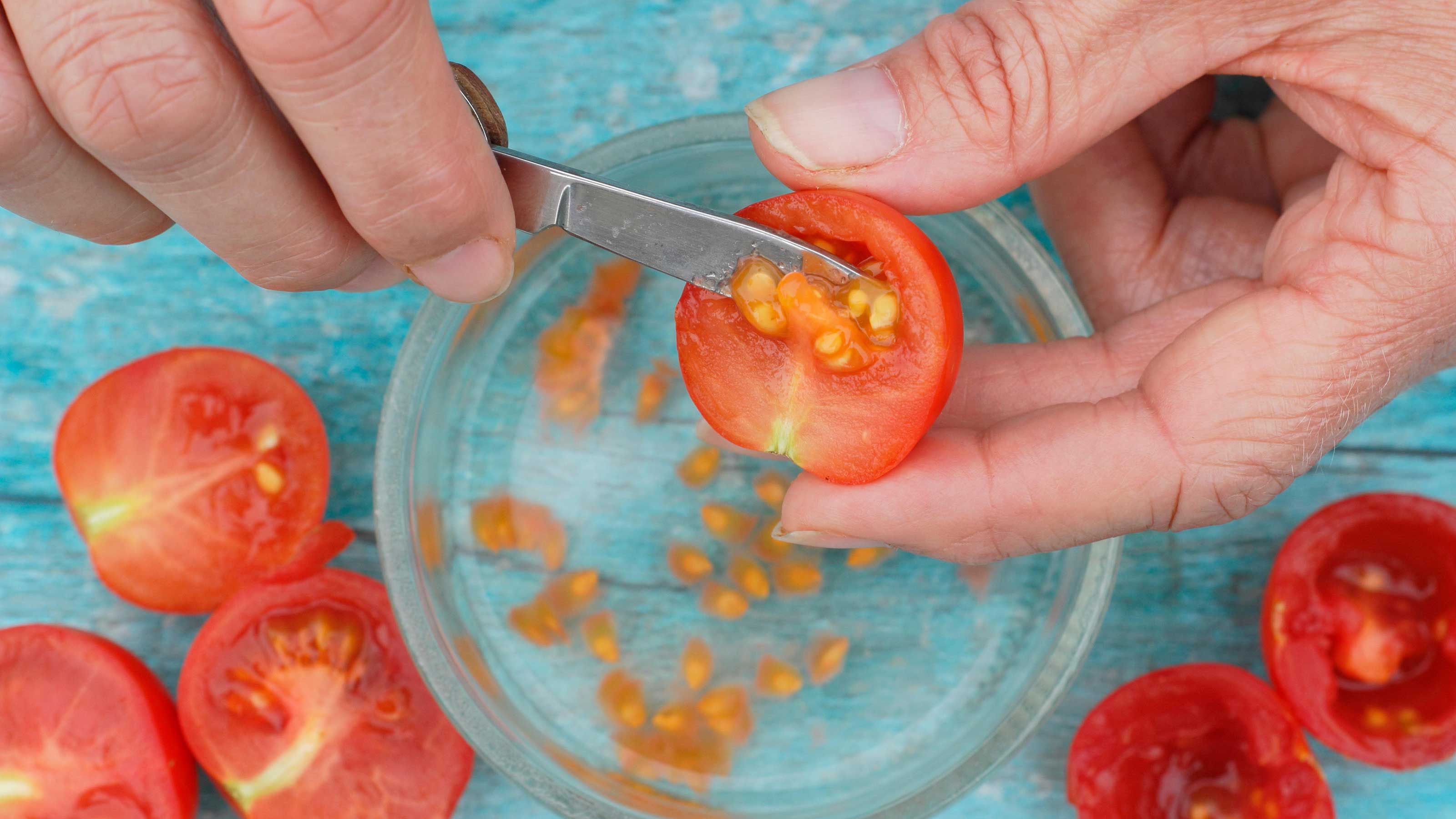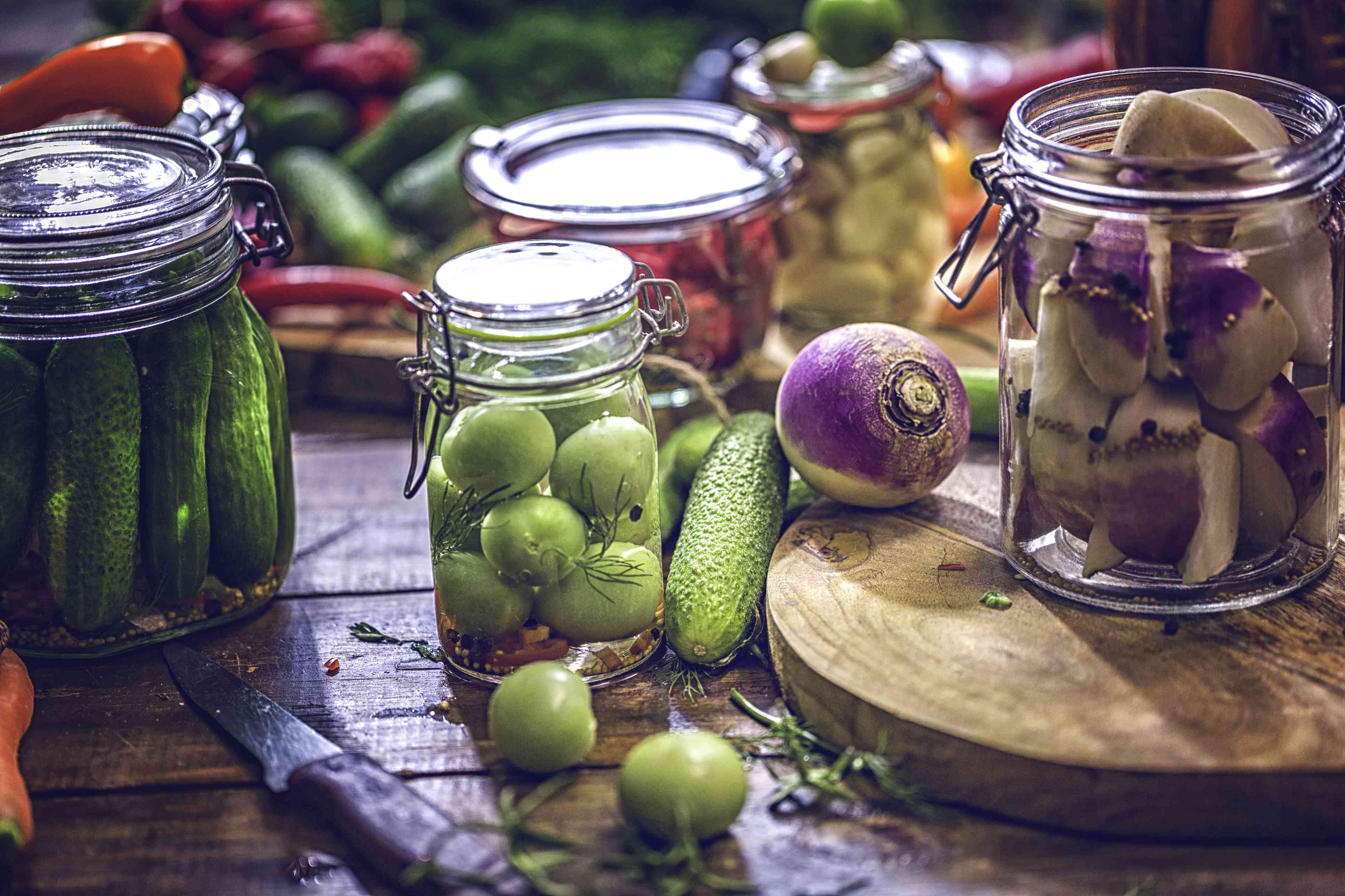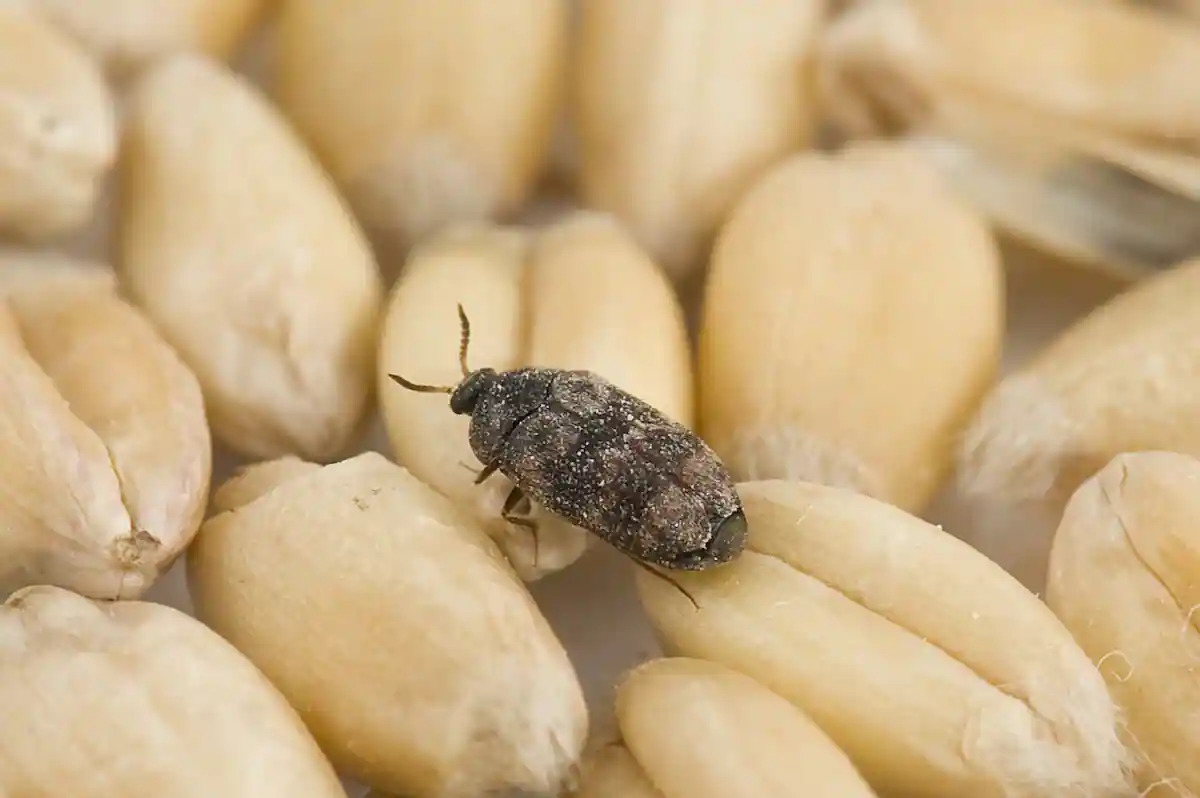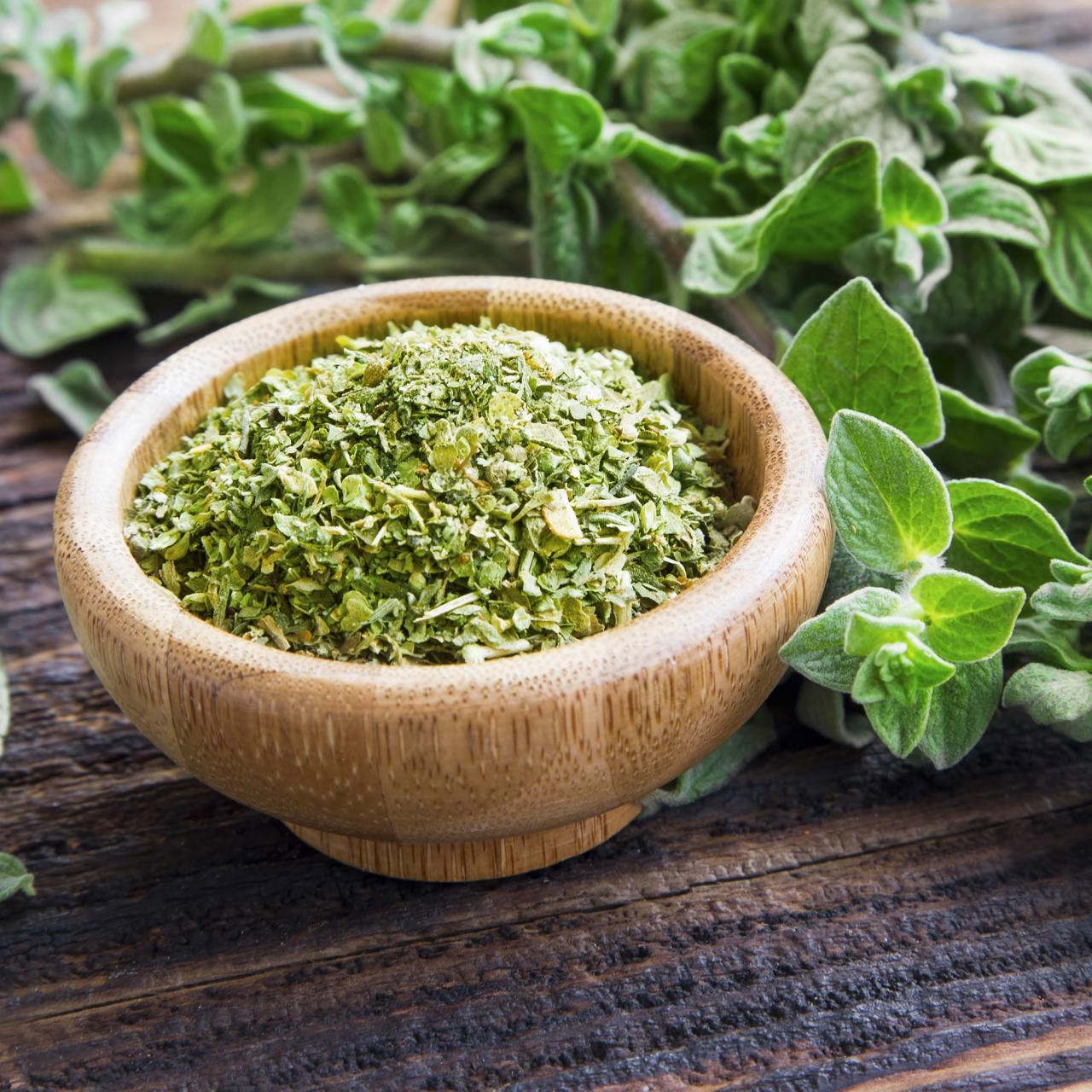Home>Types of Gardening>Ornamental Gardening>How To Preserve Hyacinth Bulbs


Ornamental Gardening
How To Preserve Hyacinth Bulbs
Modified: January 22, 2024
Learn how to preserve hyacinth bulbs in this comprehensive guide on ornamental gardening. Discover the best techniques and tips to ensure the longevity of your bulbs.
(Many of the links in this article redirect to a specific reviewed product. Your purchase of these products through affiliate links helps to generate commission for Chicagolandgardening.com, at no extra cost. Learn more)
Table of Contents
Introduction
Welcome to the world of ornamental gardening, where beauty and creativity intertwine. One of the joys of this hobby is discovering the breathtaking variety of flowers and plants that can transform any space into a vibrant haven. Among these enchanting blooms, the hyacinth holds a special place with its abundant clusters of fragrant flowers in a myriad of colors.
For avid gardeners, the desire to preserve hyacinth bulbs and enjoy their beauty year after year is a common endeavor. Preserving these bulbs is not only a way to extend their lifespan but also an opportunity to propagate new plants and share their beauty with fellow enthusiasts. In this article, we will guide you through the process of preserving hyacinth bulbs, from choosing the right bulbs to preparing them for storage and ultimately replanting them for future growth.
Preserving hyacinth bulbs is an essential practice for gardeners who want to ensure the longevity and sustainability of their plants. By properly storing and maintaining the bulbs during their dormant phase, you can guarantee robust growth and blossoming when they are ready to be replanted.
Over the course of this article, we will explore the various steps involved in preserving hyacinth bulbs, providing you with the knowledge and insights necessary to become a successful caretaker of these delicate and vibrant flowers. Let’s dive into the world of hyacinth preservation and discover the secrets to a thriving garden filled with these stunning blooms.
Choosing the Right Bulbs
When it comes to preserving hyacinth bulbs, selecting the right bulbs is crucial for successful preservation and future growth. Here are some key factors to consider when choosing hyacinth bulbs:
- Quality: Look for bulbs that are firm and free from any signs of damage or decay. Avoid bulbs that feel soft or squishy, as they may not be healthy or capable of producing vigorous growth.
- Size: Opt for larger bulbs, as they tend to produce larger and more robust flowers. Bulbs that are 1.5 to 2 inches in diameter are usually ideal for healthy growth and a stunning display of blooms.
- Variety: Consider the different varieties of hyacinth bulbs available, each offering a unique color and fragrance. Choose bulbs that match your desired aesthetic and complement the overall theme of your garden.
- Origin: Purchase bulbs from reputable nurseries or suppliers to ensure their quality and authenticity. Avoid obtaining bulbs from unknown sources or unreliable sellers, as they may not be true to the desired variety.
- Timing: It’s important to choose bulbs that are fresh and in their dormant stage. Look for bulbs that have been recently harvested and are ready for storage and future planting. Avoid bulbs that have already started sprouting.
By carefully selecting high-quality bulbs based on these criteria, you are laying a strong foundation for successful hyacinth preservation. Taking the time to choose the right bulbs will greatly increase the chances of vibrant and healthy growth when it comes time to replant them.
Preparing the Bulbs for Storage
Before storing hyacinth bulbs, it’s crucial to ensure they are properly prepared to withstand the dormant period. Here are the essential steps to follow when preparing hyacinth bulbs for storage:
- Cleaning: Start by gently removing any soil or debris attached to the bulbs. Use a soft brush or cloth to clean them without causing damage. Inspect the bulbs for any signs of pests or diseases, and discard any that appear damaged or infected.
- Drying: After cleaning, allow the bulbs to air dry in a cool, well-ventilated area for a few days. Avoid exposing them to direct sunlight or excessive heat, as this can cause damage or premature sprouting.
- Trimming: Once the bulbs are dry, trim off any remaining foliage, leaving only a short stem. This helps prevent the bulbs from using unnecessary energy and allows for a more compact and efficient storage.
- Curing: To further prep the bulbs for storage, place them in a paper bag or a mesh container. This allows for air circulation and helps prevent the bulbs from rotting. Avoid using plastic bags, as they can trap moisture and promote fungal growth.
- Labeling: It’s essential to label each bulb with its specific variety or color. This will make it easier to identify and organize the bulbs when it’s time to replant them. Use a marker or label that won’t easily fade or smear.
Following these steps will ensure that the hyacinth bulbs are clean, dry, and properly labeled, ready to be stored in a suitable location until the next planting season. Proper preparation is key to preserving the bulbs’ health and maximizing their chances of blooming beautifully in the future.
Selecting the Storage Location
Choosing the right storage location for your hyacinth bulbs is crucial to their long-term preservation and successful regrowth. Here are some key considerations when selecting a storage location:
- Temperature: Hyacinth bulbs require a cool and dry environment during their dormant period. The ideal storage temperature is around 40 to 45 degrees Fahrenheit (4 to 7 degrees Celsius). Avoid storing the bulbs in areas that are prone to extreme heat, cold, or fluctuations in temperature.
- Humidity: Hyacinth bulbs prefer low humidity levels when in storage. High humidity can lead to fungal growth and decay. Choose a storage location that is dry, well-ventilated, and has good air circulation to prevent moisture buildup.
- Darkness: Light exposure can stimulate the bulbs to sprout prematurely. Therefore, it’s important to store the bulbs in a dark or dimly lit area. Avoid storing them in places with direct sunlight or bright artificial lighting.
- Access: Ensure that the storage location is easily accessible so that you can check on the bulbs periodically and monitor their condition. This will allow you to address any issues promptly and make adjustments if necessary.
- Pest Control: Take precautions to prevent pests from damaging the bulbs during storage. Ensure that the storage area is clean and free of pests. Consider using natural deterrents such as cedar chips or lavender sachets to discourage pests from infesting the bulbs.
When considering storage options, some suitable locations include a basement, garage, or a cool closet. If you live in a region with mild winters, you may also choose to store the bulbs outdoors in a well-insulated container.
By selecting an appropriate storage location that provides the right conditions – cool temperature, low humidity, darkness, accessibility, and pest control – you are setting a solid foundation for the successful preservation of your hyacinth bulbs.
Storing Hyacinth Bulbs
Proper storage is crucial for preserving the health and vitality of hyacinth bulbs during their dormant phase. Here are the steps to follow when storing hyacinth bulbs:
- Bulb Containers: Choose suitable containers for storing the bulbs. Options include paper bags, mesh bags, or breathable containers. These will provide adequate air circulation to prevent moisture buildup and ensure the bulbs remain dormant.
- Single Layer: Place the bulbs in a single layer within the container, ensuring they are not touching or crowding each other. This allows for proper airflow and prevents them from rotting or rubbing against each other, which can cause damage.
- Storage Medium: Consider using a storage medium to help maintain the ideal conditions for the bulbs. Suitable options include dry sand, peat moss, or vermiculite. Gently surround the bulbs with the storage medium, ensuring they are evenly covered.
- Labeling: Clearly label each container with the specific variety or color of the bulbs stored within. This will help you identify and organize them easily when it’s time to replant in the future.
- Placement: Store the containers in the chosen storage location with the appropriate temperature and humidity levels. Ensure the area is cool, dark, and well-ventilated. Avoid exposing the containers to direct sunlight or extreme temperatures.
- Monitoring: Periodically check on the bulbs during their storage period. Inspect for any signs of decay, mold, or pests. If necessary, remove any affected bulbs to prevent the spread of damage to the rest.
Remember to handle the bulbs with care during the storage process. Avoid dropping or jostling them, as this can cause injury and affect their ability to grow. With proper storage techniques and regular monitoring, you can preserve the bulbs’ health and ensure their readiness for replanting when the time comes.
Monitoring and Maintaining Bulb Health
To ensure the successful preservation of hyacinth bulbs, it is essential to monitor and maintain their health during the storage period. Here are some key practices to follow:
- Regular Inspection: Check the bulbs periodically for any signs of decay, mold, or pest infestation. Remove any damaged or diseased bulbs promptly to prevent the spread to the rest of the stored bulbs.
- Humidity Control: Maintain a low humidity environment in the storage area to prevent moisture buildup. Excessive moisture can lead to rot or fungal growth. Consider using a dehumidifier or moisture-absorbing materials if necessary.
- Temperature Stability: Ensure the storage area maintains a consistent cool temperature within the recommended range. Fluctuations in temperature can disrupt the bulbs’ dormancy and affect their health. Avoid storing them near heat sources or in areas prone to extreme temperature changes.
- Air Circulation: Proper airflow is essential for preventing the buildup of stagnant air around the bulbs. Check that the storage containers have adequate ventilation or openings to allow for fresh air circulation.
- Pest Prevention: Regularly inspect the storage area for any signs of pests, such as rodents or insects. Use natural deterrents or appropriate pest control measures to prevent infestation and damage to the stored bulbs.
- Label Maintenance: Ensure that the labels on the storage containers remain legible and attached securely. This will help you easily identify the specific bulbs stored and prevent any confusion when it’s time for replanting.
- Rotation: If you have multiple batches of hyacinth bulbs in storage, consider rotating the containers occasionally. This helps ensure equal exposure to the storage conditions and prevents any bulbs from being overlooked or neglected.
By diligently monitoring the stored bulbs and maintaining optimal storage conditions, you can increase the chances of their successful preservation. Regular inspection and timely actions to address any issues will contribute to the overall health and vitality of the hyacinth bulbs throughout their storage period.
Preparing Bulbs for Replanting
When the time comes to replant your preserved hyacinth bulbs, proper preparation is essential to ensure their successful growth and blooming. Follow these steps to prepare the bulbs for replanting:
- Remove from Storage: Retrieve the stored bulbs from their storage containers, gently shaking off any excess storage medium. Handle the bulbs with care to avoid injuring them or causing unnecessary stress.
- Inspect for Viability: Check each bulb for its viability by examining its firmness and vitality. Discard any bulbs that have become soft, moldy, or show signs of decay. Focus on preserving healthy bulbs for replanting.
- Soak the Bulbs: Before planting, soak the bulbs in lukewarm water for a few hours. This helps rehydrate the bulbs and prepares them for the upcoming growth phase.
- Prepare the Planting Area: Choose a suitable location in your garden for replanting the hyacinth bulbs. Ensure the soil is well-drained and amended with organic matter to provide essential nutrients for healthy growth.
- Planting Depth: Dig holes that are approximately three times the height of the bulb and space them apart according to the specific variety’s recommendations. Place the bulbs in the holes, pointed end up, and cover them with soil, gently firming it around the bulbs.
- Watering: After planting, water the bulbs thoroughly to settle the soil and provide them with initial moisture. Be careful not to overwater, as excessive moisture can lead to root rot.
- Mulching: Apply a layer of organic mulch, such as straw or wood chips, around the planted bulbs. This helps conserve moisture, suppress weed growth, and regulate soil temperature.
- Monitor and Maintain: Throughout the growing season, monitor the bulbs for any signs of stress, pests, or diseases. Provide regular watering, fertilization, and necessary care to ensure their healthy development.
By properly preparing the hyacinth bulbs for replanting and providing them with optimal growing conditions, you are setting the stage for vibrant blooms and continued enjoyment of these beautiful flowers.
Conclusion
Preserving hyacinth bulbs allows you to enjoy the beauty and fragrance of these exquisite flowers year after year. By following the steps outlined in this guide, you can successfully preserve your hyacinth bulbs and ensure their health and vitality for future growth.
Choosing the right bulbs, preparing them for storage, selecting an appropriate storage location, and monitoring their health are all critical aspects of preserving hyacinth bulbs. The careful handling of the bulbs, proper storage conditions, and regular inspections help maintain their dormancy and prevent damage or decay.
When the time comes to replant your preserved bulbs, ensure they are thoroughly soaked and inspect them for viability. Choose a suitable planting area, providing well-drained soil and proper spacing. With proper care and maintenance, you can enjoy the beauty of hyacinth blooms once again.
Remember to monitor the bulbs throughout their storage period, keeping an eye out for any signs of decay, pests, or the need for adjustments in temperature or humidity. By staying attentive and proactive, you can maximize the chances of successful preservation and future regrowth.
Preserving hyacinth bulbs is a rewarding endeavor that allows you to create a thriving and enchanting garden year after year. With a little effort and the right techniques, you can enjoy the beauty of these stunning flowers and share their splendor with others.





